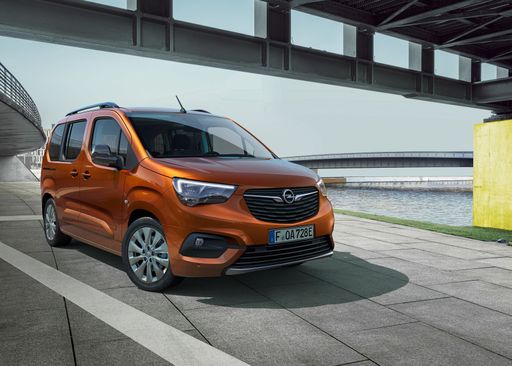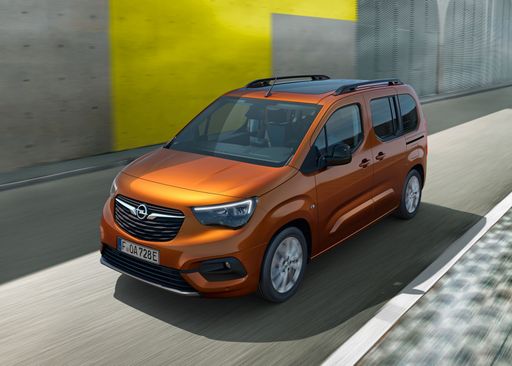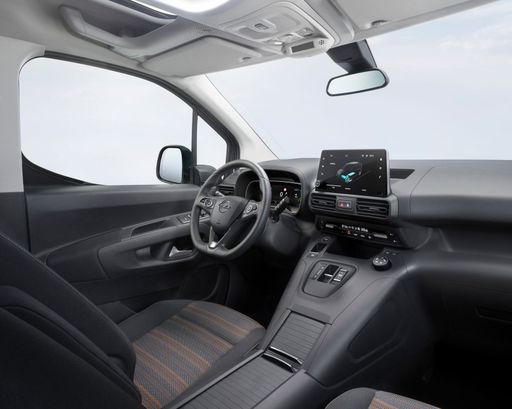Alfa Romeo Junior vs Vauxhall Combo – Performance, range & efficiency compared
Compare performance, boot capacity, efficiency and price at a glance.
Find out which car is the better choice for you – Alfa Romeo Junior or Vauxhall Combo?
Costs and Efficiency:
Price and efficiency are often the first things buyers look at. Here it becomes clear which model has the long-term edge – whether at the pump, the plug, or in purchase price.
Vauxhall Combo has a minimal advantage in terms of price – it starts at 24800 £, while the Alfa Romeo Junior costs 25700 £. That’s a price difference of around 823 £.
Fuel consumption also shows a difference: Alfa Romeo Junior manages with 4.80 L and is therefore to a small extent more efficient than the Vauxhall Combo with 5.50 L. The difference is about 0.70 L per 100 km.
In terms of energy consumption, the advantage goes to the Alfa Romeo Junior: with 15.10 kWh per 100 km, it’s clearly perceptible more efficient than the Vauxhall Combo with 18.50 kWh. That’s a difference of about 3.40 kWh.
As for range, the Alfa Romeo Junior performs somewhat better – achieving up to 410 km, about 65 km more than the Vauxhall Combo.
Engine and Performance:
Under the bonnet, it becomes clear which model is tuned for sportiness and which one takes the lead when you hit the accelerator.
When it comes to engine power, the Alfa Romeo Junior has a decisively edge – offering 280 HP compared to 136 HP. That’s roughly 144 HP more horsepower.
In acceleration from 0 to 100 km/h, the Alfa Romeo Junior is decisively quicker – completing the sprint in 5.90 s, while the Vauxhall Combo takes 11.30 s. That’s about 5.40 s faster.
In terms of top speed, the Alfa Romeo Junior performs to a small extent better – reaching 206 km/h, while the Vauxhall Combo tops out at 184 km/h. The difference is around 22 km/h.
There’s also a difference in torque: Alfa Romeo Junior pulls a bit stronger with 345 Nm compared to 300 Nm. That’s about 45 Nm difference.
Space and Everyday Use:
Whether family car or daily driver – which one offers more room, flexibility and comfort?
Seats: Vauxhall Combo offers evident more seating capacity – 7 vs 5.
In curb weight, Alfa Romeo Junior is slightly lighter – 1380 kg compared to 1530 kg. The difference is around 150 kg.
In terms of boot space, the Vauxhall Combo offers significantly more room – 850 L compared to 415 L. That’s a difference of about 435 L.
In maximum load capacity, the Vauxhall Combo performs significantly better – up to 2693 L, which is about 1413 L more than the Alfa Romeo Junior.
When it comes to payload, Vauxhall Combo convincingly takes the win – 840 kg compared to 420 kg. That’s a difference of about 420 kg.
Who comes out on top?
Overall, the Alfa Romeo Junior shows itself to be has the upper hand and secures the title of DriveDuel Champion.
It convinces with the more balanced overall package and proves to be the more versatile choice for everyday use.
 @ Alfa Romeo / Stellantis Media
@ Alfa Romeo / Stellantis Media
Alfa Romeo Junior
Alfa Romeo Junior
The Alfa Romeo Junior captures the essence of Italian design with its sleek lines and compact dimensions, making it an icon of elegance and performance. With a spirited driving experience and a charming retro aesthetic, it appeals to enthusiasts and casual drivers alike. This delightful car embodies the brand's rich heritage while remaining a fun and engaging option for those seeking a unique automotive experience.
details @ Alfa Romeo / Stellantis Media
@ Alfa Romeo / Stellantis Media
 @ Alfa Romeo / Stellantis Media
@ Alfa Romeo / Stellantis Media
 @ Alfa Romeo / Stellantis Media
@ Alfa Romeo / Stellantis Media
Vauxhall Combo
The Opel Combo high-roof estate car stands out for its impressive versatility, making it an ideal choice for both families and professionals. Its spacious interior and clever storage solutions ensure a comfortable ride and plenty of room for all your needs. With a focus on practicality and efficient design, the Combo seamlessly combines functionality with modern driving technology.
details @ Opel / Stellantis Media
@ Opel / Stellantis Media
 @ Opel / Stellantis Media
@ Opel / Stellantis Media
 @ Opel / Stellantis Media
@ Opel / Stellantis Media
 @ Opel / Stellantis Media
@ Opel / Stellantis Media
 @ Alfa Romeo / Stellantis Media
@ Alfa Romeo / Stellantis Media
|
 @ Opel / Stellantis Media
@ Opel / Stellantis Media
|
|
|
|
Costs and Consumption |
|
|---|---|
|
Price
25700 - 41600 £
|
Price
24800 - 36500 £
|
|
Consumption L/100km
4.8 - 5.4 L
|
Consumption L/100km
5.5 - 5.9 L
|
|
Consumption kWh/100km
15.1 - 17.5 kWh
|
Consumption kWh/100km
18.5 - 18.8 kWh
|
|
Electric Range
344 - 410 km
|
Electric Range
333 - 345 km
|
|
Battery Capacity
0.4 - 51 kWh
|
Battery Capacity
-
|
|
co2
0 - 119 g/km
|
co2
0 - 155 g/km
|
|
Fuel tank capacity
44 - 45 L
|
Fuel tank capacity
53 L
|
Dimensions and Body |
|
|---|---|
|
Body Type
SUV
|
Body Type
High Roof Estate
|
|
Seats
5
|
Seats
5 - 7
|
|
Doors
5
|
Doors
4 - 5
|
|
Curb weight
1380 - 1689 kg
|
Curb weight
1530 - 1922 kg
|
|
Trunk capacity
340 - 415 L
|
Trunk capacity
597 - 850 L
|
|
Length
4173 mm
|
Length
4410 - 4760 mm
|
|
Width
1781 mm
|
Width
1848 mm
|
|
Height
1505 - 1538 mm
|
Height
1812 - 1818 mm
|
|
Max trunk capacity
1205 - 1280 L
|
Max trunk capacity
2126 - 2693 L
|
|
Payload
390 - 420 kg
|
Payload
430 - 840 kg
|
Engine and Performance |
|
|---|---|
|
Engine Type
Electric, Petrol MHEV
|
Engine Type
Electric, Diesel
|
|
Transmission
Automatic
|
Transmission
Automatic, Manuel
|
|
Transmission Detail
Dual-Clutch Automatic, Reduction Gearbox
|
Transmission Detail
Reduction Gearbox, Manual Gearbox, Automatic Gearbox
|
|
Drive Type
Front-Wheel Drive, All-Wheel Drive
|
Drive Type
Front-Wheel Drive
|
|
Power HP
136 - 280 HP
|
Power HP
102 - 136 HP
|
|
Acceleration 0-100km/h
5.9 - 9.1 s
|
Acceleration 0-100km/h
11.30 s
|
|
Max Speed
150 - 206 km/h
|
Max Speed
135 - 184 km/h
|
|
Torque
230 - 345 Nm
|
Torque
250 - 300 Nm
|
|
Number of Cylinders
3
|
Number of Cylinders
4
|
|
Power kW
100 - 207 kW
|
Power kW
75 - 100 kW
|
|
Engine capacity
1199 cm3
|
Engine capacity
1499 cm3
|
General |
|
|---|---|
|
Model Year
2024 - 2025
|
Model Year
2024
|
|
CO2 Efficiency Class
A, C, D
|
CO2 Efficiency Class
A, E
|
|
Brand
Alfa Romeo
|
Brand
Vauxhall
|
What drive types are available for the Alfa Romeo Junior?
Available configurations include Front-Wheel Drive or All-Wheel Drive.
The prices and data displayed are estimates based on German list prices and may vary by country. This information is not legally binding.
